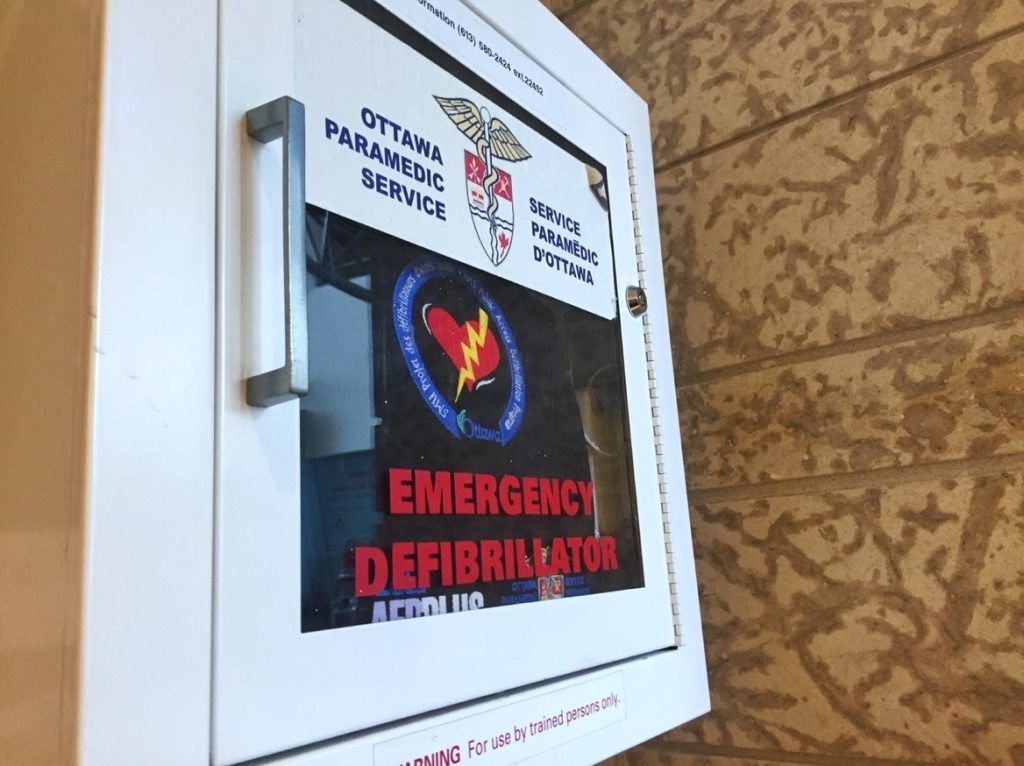Public defibrillators absent from Centretown’s centre
By Devon Litster and Amanda Marsh
Centretown has 23 public access heart defibrillators, but not one of them is within a 450-metre radius of the main intersection of Bank Street and Somerset West.
The intersection, located amidst many businesses, restaurants and private residences, is a central area in the community. This makes the absence of a potentially lifesaving defibrillator worrisome to some residents.
India Roberts, a Carleton University student and Centretown resident, said it’s scary that there’s not more lifesaving equipment in her neighborhood.
“If you don’t know where to turn to get an AED that’s a horrible thing because that could save a life,” explained Roberts.
She noted there is a vulnerable population in the area, surrounding the Centretown Community Health Centre, that could benefit from more defibrillators being accessible to the public.
Private residences and businesses may have more defibrillators, but these undocumented devices become near-impossible to find in an emergency, and are hard to quantify.
Public access defibrillators are labelled with red and white signage, and are typically located in publically accessible buildings. Typically, buildings will advertise their public access defibrillators with a sticker on the front entrance.
“I think that [defibrillators] make such a difference and they could really bring someone back to life. I think a change is definitely required especially considering how many people work and live in that area,” Roberts added.
A local hockey team experienced first-hand the benefit of having public access defibrillators. During a hockey game at the McNabb Community Centre in November 2016, 57 year-old David Wardle witnessed a teammate collapse on the ice. The defenceman suffered a heart attack. It was with a shock from a defibrillator that the man’s heart was restarted and paramedics arrived moments later.
“It’s hard to relay the stress that goes on with this kind of incident but time is of the essence, so you must react,” Wardle says. He was the player responsible for administering CPR before the arena attendant used the defibrillator.
“I think every rink should have one and someone in the rink should know CPR,” Wardle says.
According to the Heart & Stroke Foundation public access defibrillators can be vital to the survival of heart attack patients.
The Heart & Stroke Foundation states that “any location that has 1,000 adults over the age of 35 present per day during normal business hours (7.5 hours per day, 5 days per week, 250 days per year) can expect 1 incident of sudden cardiac arrest every 5 years.”

